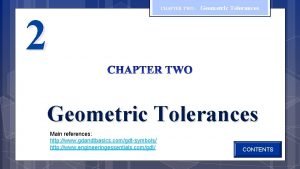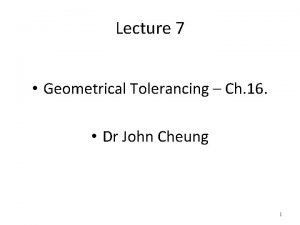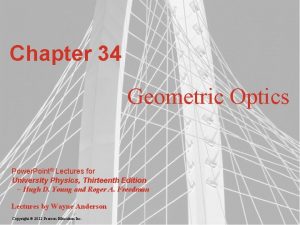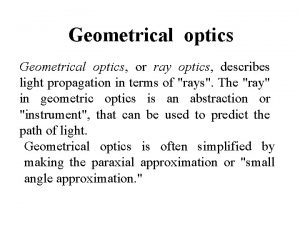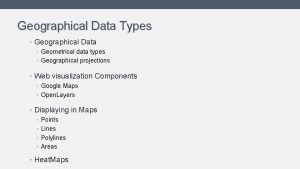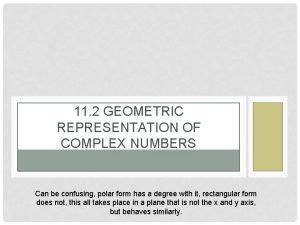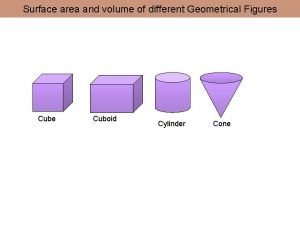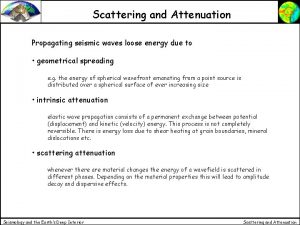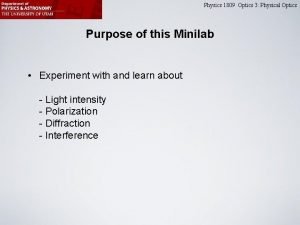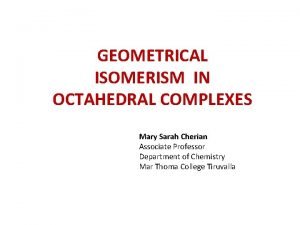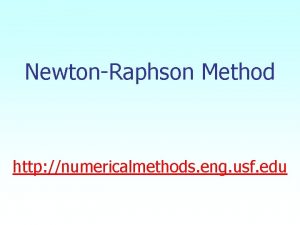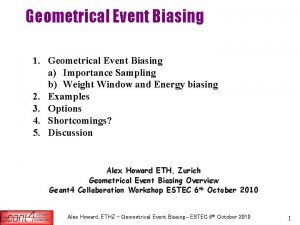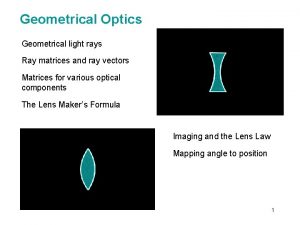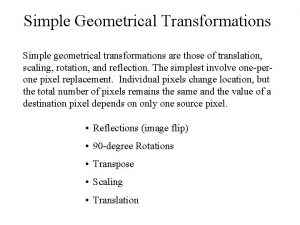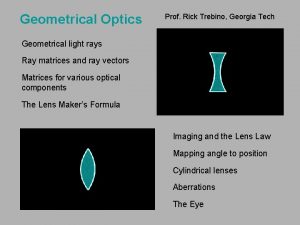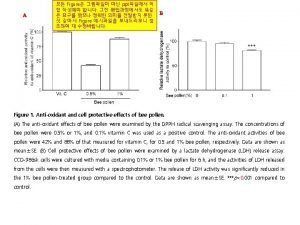NewtonRaphson Method 1 NewtonRaphson Method Figure 1 Geometrical














- Slides: 14

Newton-Raphson Method 1

Newton-Raphson Method Figure 1 Geometrical illustration of the Newton-Raphson method. 2

Derivation Figure 2 Derivation of the Newton-Raphson method. 3

Example Solve for Let us assume the initial guess of the root of is. 4

Example. Iteration 1 The estimate of the root is 5

Example 1 Cont. Iteration 2 The estimate of the root is 6

Example 1 Cont. Iteration 3 The estimate of the root is 7

Advantages n n 8 Converges fast (quadratic convergence), if it converges. Requires only one guess

Drawbacks 1. Divergence at inflection points Selection of the initial guess or an iteration value of the root that is close to the inflection point of the function may start diverging away from the root in ther Newton-Raphson method. For example, to find the root of the equation The Newton-Raphson method reduces to . . Table 1 shows the iterated values of the root of the equation. The root starts to diverge at Iteration 6 because the previous estimate of 0. 92589 is close to the inflection point of. Eventually after 12 more iterations the root converges to the exact value of 9

Drawbacks – Inflection Points Table 1 Divergence near inflection point. Iteration Number 10 xi 0 5. 0000 1 3. 6560 2 2. 7465 3 2. 1084 4 1. 6000 5 0. 92589 6 − 30. 119 7 − 19. 746 18 0. 2000 Figure 8 Divergence at inflection point for

Drawbacks – Division by Zero 2. Division by zero For the equation the Newton-Raphson method reduces to For , the denominator will equal zero. 11 Figure 9 Pitfall of division by zero or near a zero number

Drawbacks – Oscillations near local maximum and minimum 3. Oscillations near local maximum and minimum Results obtained from the Newton-Raphson method may oscillate about the local maximum or minimum without converging on a root but converging on the local maximum or minimum. Eventually, it may lead to division by a number close to zero and may diverge. For example for roots. 12 the equation has no real

Drawbacks – Oscillations near local maximum and minimum Table 3 Oscillations near local maxima and mimima in Newton-Raphson method. Iteration Number 0 1 2 3 4 5 6 7 8 9 13 – 1. 0000 0. 5 – 1. 75 – 0. 30357 3. 1423 1. 2529 – 0. 17166 5. 7395 2. 6955 0. 97678 3. 00 2. 25 5. 063 2. 092 11. 874 3. 570 2. 029 34. 942 9. 266 2. 954 300. 00 128. 571 476. 47 109. 66 150. 80 829. 88 102. 99 112. 93 175. 96 Figure 10 Oscillations around local minima for.

Drawbacks – Root Jumping 4. Root Jumping In some cases where the function is oscillating and has a number of roots, one may choose an initial guess close to a root. However, the guesses may jump and converge to some other root. For example Choose It will converge to instead of 14 Figure 11 Root jumping from intended location of root for.
 Structural vs geometric isomers
Structural vs geometric isomers Gd and t symbols
Gd and t symbols Geometrical tolerance
Geometrical tolerance Tolerancing
Tolerancing Geometric optics ppt
Geometric optics ppt Geometrical
Geometrical Geometrical
Geometrical Geometrical
Geometrical Geometric representation of complex numbers
Geometric representation of complex numbers Total surface area of cylinder
Total surface area of cylinder Geometrical spreading
Geometrical spreading Geometrical shadow
Geometrical shadow Define geometrical isomerism
Define geometrical isomerism A transformation is an operation that
A transformation is an operation that 6 figure reference
6 figure reference


